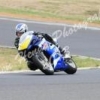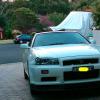Weird Idle Problem
Announcements
-
Similar Content
-
Latest Posts
-
How did you go with your problem? End up fixing it. Have a y34 aswell vq30det
-
But if I smoke test 5th cylinder it’s all ok, no leaks when I try with 2nd it’s leaking exhaust and intake, it doesn’t come from oil dip stick. so maybe when car was running poorly, rich or sth. Spark plugs were black and covered in charcoal or sth lookalike. could potential contamination make valves not seal properly? is there also a possibility that rb’s don’t have equal performing cooling passages meaning back of the engine will be hotter than front. Can this cause improper wear if engine was running under load for short time? Or carbon build up could just burnt from 4-6 and is still on 1-3? I out of my head like really. Timing is as manual crank-exhaust 47, exhaust-intake 38 at this point I thinking about give it a try and make another 500-1000km and check if anything change, if not I will most likely disassemble engine head /or whole engine and send it back to rebuild. It’s killing me
-
Thanks Duncan, I don't have a GTR these days mate. Gone soft..
-
Yeah. air pressure leakdown test is where I would be headed next here, using one's ears to determine whether it's the valves or bores/rings leaking...
-
More likely you didn't bed the rings in correctly and have glazed the bores. Running with misfires on a fresh build is somewhat of a no-no. Surely no-one "smoke tests" the combustion chamber? That's what a leakdown test is for. Smoke testing is, um, a bit of a wank at best, and only really useful for external pipework.
-






Recommended Posts
Create an account or sign in to comment
You need to be a member in order to leave a comment
Create an account
Sign up for a new account in our community. It's easy!
Register a new accountSign in
Already have an account? Sign in here.
Sign In Now